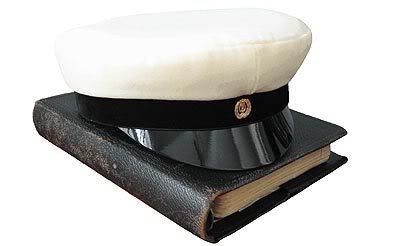
Read the foreword and about the test results why Finnish children are the smartest in the world
The school system in Finland is homogenous, well structured and it helps that the culture is very pro-education. Finland holds the largest percentage of college educated people in Europe, every third person has a third degree education.
There are still some very surprising things the Finns are doing differently. Like shorter school days, less studying, more playing – and still the Finnish kids prove that this is the formula for the best educated children in the world.
LESS HOURS
Children in Finland start their school at age 7, and the first two grades normally have days of only for 4 hours. Even in high school only students who want to take extra classes, have a 30-hour school week. Schools do not offer after school activities. If children want to do sports, arts or any other activities, it is all done outside the school.
MORE SPORTS
Even though high schools do not have football teams, or cheerleaders, all students are required 3-4 times a week PE classes. Even the physical education is education: teaching children a variety of sports. I remember classes of horseback riding, spinning, ping pong, wall climbing and golf in high school. Every student has to learn to ski, ice skate, swim, play basketball, volley ball and ice hockey, among many other sports. Knowing sports is considered part of general education every one should know.
MORE RECESS
School classes are 45-50 minutes long, and then children have a short 5-10 minute long recess. It is mandatory to go outside, on the exception if it’s colder than -13 F. The outdoor air is believed to let your “brain air out”, and make learning easier. Lunch recess offers 20-30 more minutes of outdoor playing.
LESS HOMEWORK
The kids Finnish their homework, which usually takes far less time as for the children in the US. They don’t have even half of the amount of homework as the American students. Shorter days, and less homework leave much more time for personal development – or for watching those subtitled TV shows.
LESS TV
Cable & satellite TVs are not as common in Finland as they are here. Most families have only 4-5 TV channels and the average time of a Finnish child watching TV is much shorter than of an American child.
MULTI-LINGUAL AND HIGH TECH
The TV show offering might be lacking but otherwise the technology is higher and most children have their own computers and cellphones since elementary school. Even the foreign languages are taught in high tech language studios, with capacities of recording pronunciation of foreign language with a play-back capacity. The students in Finland start studying English on 3rd grade, Swedish on 7th grade and other languages like German, Italian, Russian or French on the 8th grade.
American athletes can graduate from college just by playing football, but the Finns have to master at least three languages by the time they finish high school.
MORE READING
Finnish people read a lot. Most people subscribe the newspaper, and regularly go to library. Libraries are well stocked, and even in the smallest towns have their own library. Reading and learning more is something most Finns want to do, not just because they have to.
Finnish language is one of the most difficult languages to learn on an adult age. It is part of the Finnish-Ugri language group, and there are not many languages in the world with a similar structure. However – Finnish language is one the easiest languages to learn to read and write for the natives. The language is phonetic and the words are written the same way as they are said.
Think about it: no long a’s, not short or long vowels, not silent letters. This makes learning to write so much easier for children, and no wonder they don’t have to start the school at age 5 – they will catch up the Americans on reading and writing within just one year.
LESS SCHOOL, MORE OPTIONS
High school isn’t even mandatory, even though most children go to high school. Only 9-year education is mandatory in Finland. After the nine years, students can also choose to study different professions like being a hair dresser or a car mechanic in a variety of specialty schools. The high school is Finland is like junior college in the US, and required to enter to universities and colleges.
MORE DIFFICULT TESTING
The high point of high school is the matriculation examination, where all the subjects taught during the whole duration of high school is tested. The student has to take several tests, most of them last for 6 hours, and require writing answers using logical thought processing and information of different subject matters. The languages are tested also as a hearing test. Only the foreign language tests have some multiple choice questions, but in general multiple choice questions are very rare in schools in Finland.
MONEY ISN’T AN OBSTACLE
There are only a handful of private sector elementary or middle schools in the whole country, and children go to the school nearest where they live. The same education is guaranteed regardless of background of the student.
After high school students can apply to colleges or universities. Both general grades from high school and the success in the matriculation exams are taken in consideration, and most schools have a specific testing requiring knowledge of the school specialty.
While getting into the universities and better colleges is not by far easy, it still is made available for anyone regardless of wealthiness. The higher education isn’t just free, but the government pays a small sum for each month you study. The pressure of getting scholarships isn’t there at all, and everybody has the same possibilities to get a higher education.
MULTI-LEVEL LEARNING
I studied engineering in a technical college and my entrance exams included tests about higher math, physics and English. Yes, you already had to know higher math to get into the school. My school was a Swedish speaking school and I was majoring in production management in an English taught study group. If I wanted to take classes off my curriculum, I had to take them in Swedish – for example my Spanish classes were Swedish taught. My native language is Finnish, and my school didn’t even offer classes taught in Finnish.
AND WHAT’S LACKING..
No categorizing, no advanced student groups. The gaps between the worst and the best students are smaller than in the US. Then again: highly gifted students are not getting special treatment either, and sometimes their full potential can’t blossom.
Not as many competitions. There are annual sports or math competitions, but succeeding in them doesn’t seem to be that big of a deal. There isn’t much competition between students – at least not encouraged by the educational system.
No school uniforms, no honor societies or no valedictorians.
No cultural diversity. The student group is very homogeneous, no racial, religious, ethnical or background differences. Even the wealth differences in Finland are very small. They don’t have really poor people at all, nor the ridiculously rich people either.

